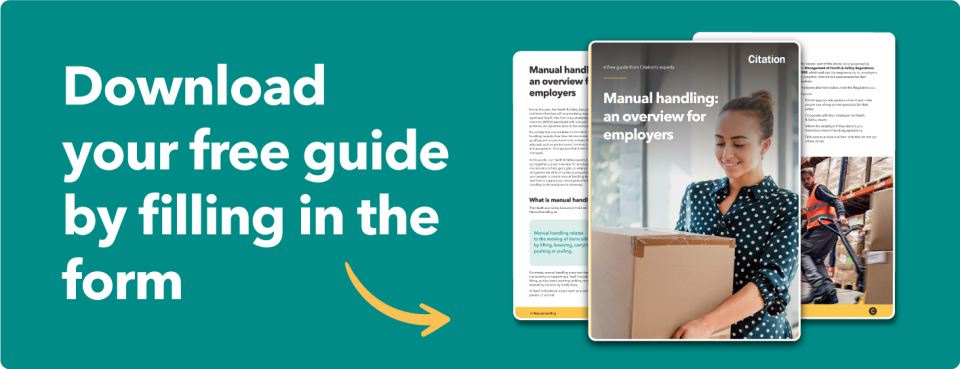A guide to manual handling

In your free guide:
- How to assess your site or workplace for manual handling hazards
- Completing a manual handling risk assessment
- Properly training your people in correct techniques
- How to support your employees when manual handling is needed
No work environment is ever really free of manual handling activity – even moving something from one desk to another counts. As the most common cause of workplace injury in the UK, these hazards absolutely have to be managed. And that’s your responsibility as an employer. You’re legally obliged to make sure risks are assessed and controls put in place.
So, get started today with this free guide from our Health & Safety experts! To get your free resource, simply enter your details in the form on this page.
Download your guide!
Already a client? Head over to Atlas for our exclusive client-only content.

